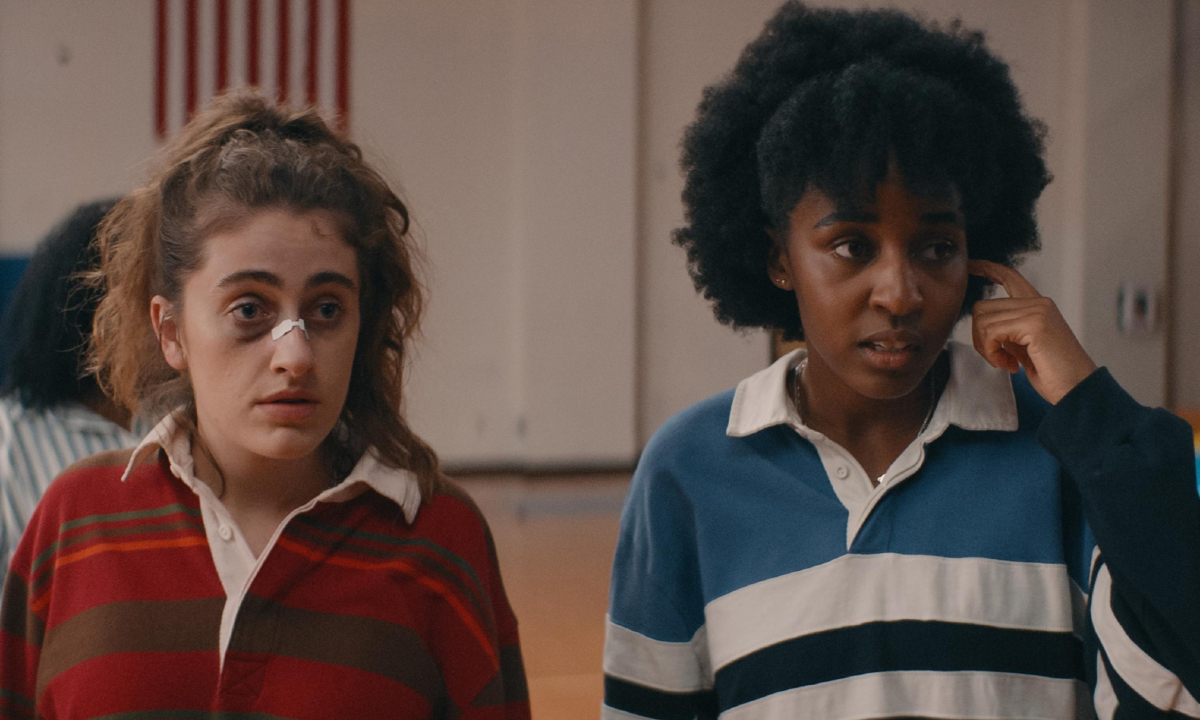So, obviously, we’re all very, very, very excited for the upcoming film Bottoms. Starring our eternal crushes Ayo Edebiri and Rachel Sennott, the film follows two unpopular girls who are looking to score before they graduate. Everything about it seems incredible, and the latest trailer only reinforces that idea:
The tagline literally reads, “Want to get punched in the face by hot girls? WELL GET IN LINE.” I’ve been so tuned into other news beats this year, I honestly didn’t know Bottoms was going to be about femme fight clubs in particular. And as my college also had an all-femme, INCREDIBLY queer fight club on the DL, I couldn’t contain my glee at this awesome concept for a movie. Nearly everyone in that fight club was either already out or came out later. I used to be quite squishy myself, so I never participated, but I heard a lot of stories. Often I’d be out for a walk with a friend, and a mutual friend would stumble out of the woods, all disheveled and grinning like a devil.
“What’s up with you?” we’d ask. “I just wrestled with the hottest chick from the other side of campus,” they’d reply, in a lovesick daze. Loved that for them, all of them.
But as I related this to my coworkers here at TMS, I realized my experience isn’t so unique: a lot of people had their own femme fight club experiences! And they were all pretty damn gay!
In Bottoms, the two main characters (Edebiri and Sennott) form a fight club to mobilize the cheerleaders into letting out their inner aggressions against their jock boyfriends … and then hook up with them instead. I love that because teen girls go through a lot and sometimes a bitch has to let loose. But it really got me wondering about this punch-to-gay pipeline, and just how common it is, and what that says about how fighting helps us … I dunno, find ourselves?
I had to fine-tune my search to avoid the porn links (jail to all of you, straight to jail), and indeed, I found quite a bit of evidence pointing to the commonality of these fight clubs! Some are fairly organized—enough to be considered proper “rings,” like Femme Feral, which was covered in a 2018 VICE feature. Femme Feral was founded in response to rising frustrations regarding the state of the world, especially in Britain at the time:
“It was a way of channeling and being able to get that anger out and put it somewhere in a productive way,” explained [founder] Patey-Ferguson. “I think we wanted to find a way of sharing this anger and take up loads of space. It is a reaction to that [idea] as a girl you need to be nice, personal, peaceful, [to] sit down and be quiet.
The feral aspect is about this instinctual behavior that everyone knows how to do it. We deliberately don’t get good because we want people to be able to jump in,” Patey-Ferguson said. “You find this rage within you and you just go for it. I think a lot of that energy is very genuine and comes from a very instinctual place… rather than it being like a theater show. It is totally in the moment and deep inside you.”
Some groups, however, treat these clubs as opportunities to learn how to fight, and within that, how to defend themselves. Seattle group Queer Fight Night (QFN) extends not just to women, but also to trans and gender-nonconforming folks who want to learn martial arts in a safe, supportive environment. While they don’t just duke it out animal-style like the other fight clubs in this article, they still operate similarly in that they provide a safe space to let it all out and gain something positive from the experience.
Honestly, I recommend doing your own little research deep-dive, because this subculture is alive and well in most metropolitan areas and beyond, and most of them look super cool and inclusive! Have you been in one yourself? We’d love to hear your stories in the comments, especially as we wait for Bottoms with bated breath. Viva la femme rage!
(featured image: MGM)










Published: Jun 6, 2023 9:33 PM UTC